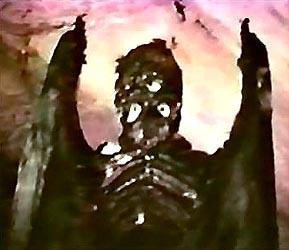
Oswald in New Orleans
For those of you who may have missed the Winter 1980 issue of Louisiana History here are some excerpts from "Lee Harvey Oswald in New Orleans: A Reappraisal" by Professor Michael L. Kurtz
Oswald listed the address of his Fair Play for Cuba Committee as 544 Camp Street. This is in the same building as the private detective offices of W. Guy Banister, a former FBI agent and New Orleans police official. A well known-leader of the right-wing extremist element in New Orleans...
Banister and Oswald were seen together on numerous occasions. Once, the two were observed having coffee in Mancuso's Restaurant, located on the first floor of the Camp Street building. On another occasion they were seen in the restaurant with David Ferrie and Carlos Quiroga, a Cuban exile leader. Several times Oswald was seen entering Banister's second floor office. One of Oswald's co-workers saw Oswald and Banister walking together on Camp Street. One person remembers seeing the two at a White Citizen's Council meeting. Two people remember Oswald as one of the participants in a discussion of the racial issue. The discussion, whikch took place on the campus of Louisiana State University in New Orleans, involved Oswald and Banister debating federal integration policies with a number of students.
If Oswald was simply a pro-Cuban Marxist, as the Warren Commission claimed, it is curious that he would have spent so much time in the company of Guy Banister.
David Ferrie was very active in the anti-Castro activities in New Orleans from 1959 through 1963. He and Lee Harvey Oswald were seen together several times in the summer of 1963.Twice they were seen conversing in Mancuso's Restaurant. They were seen at a segragationist meeting in the late spring of that year. In August they were seen at a party in the French Quarter. According to two people who attended the party, Oswald and Ferrie discussed United States foreign policy, especially with regard to Cuba. Both men expressed strong disapproval of the failure to overthrow the Castro regime.
One feature of Oswald's five-month sojourn in New Orleans that has never been revealed is the fact that he made several trips to Baton Rouge in the summer of 1963. According to witnesses, Oswald accompanied a prominent leader of the White Citizen's Council and of other segregationist organizations to Baton Rouge six or eight times in July and August. These witnesses met Oswald, who was introduced to them as "Leon" Oswald. Oswald's companion, who was a personal friend of two of these witnesses, stated that he was employing "Leon" to do construction work for him. Oswald, however, was not dressed in work clothes; he was wearing what appeared to be "dressy clothes." Furthermore, Oswald and his companion engaged indiscussions which included criticisms of American foreign policy as being "soft on Communism" and of the United States civil-rights programs. On their last visit to Baton Rouge, the two men were accompanied by two "Latins," neither of whom said anything to them.
Professor Kurtz interviewd many of these witnesses personally. Professor Kurtz also later revealed that one of the witnesses, who observed Oswald with Banister both at Mancuso's Restaurant and Louisiana State University, was Professor Kurtz himself. Although Oswald's associations with right-wingers Ferrie and Banister do not fit into Professor Kurt's own theories of the assassination (he leans toward Castro as being behind the assassination, he nontheless reluctantly included himself as a witness to history. Although most would consider an historian as a credible witness to historical events, this has not stopped some from attempting to discredit Professor Kurtz, although no one has come up with any good reason as to why he should not be believed.



2 Comments:
He believed Castro did it but Oswald was in company of anti Communists. All evidence points to Lee Oswald as a low level intelligence officer.
A low level intelligence operative for the U.S. government I meant.
Post a Comment
<< Home